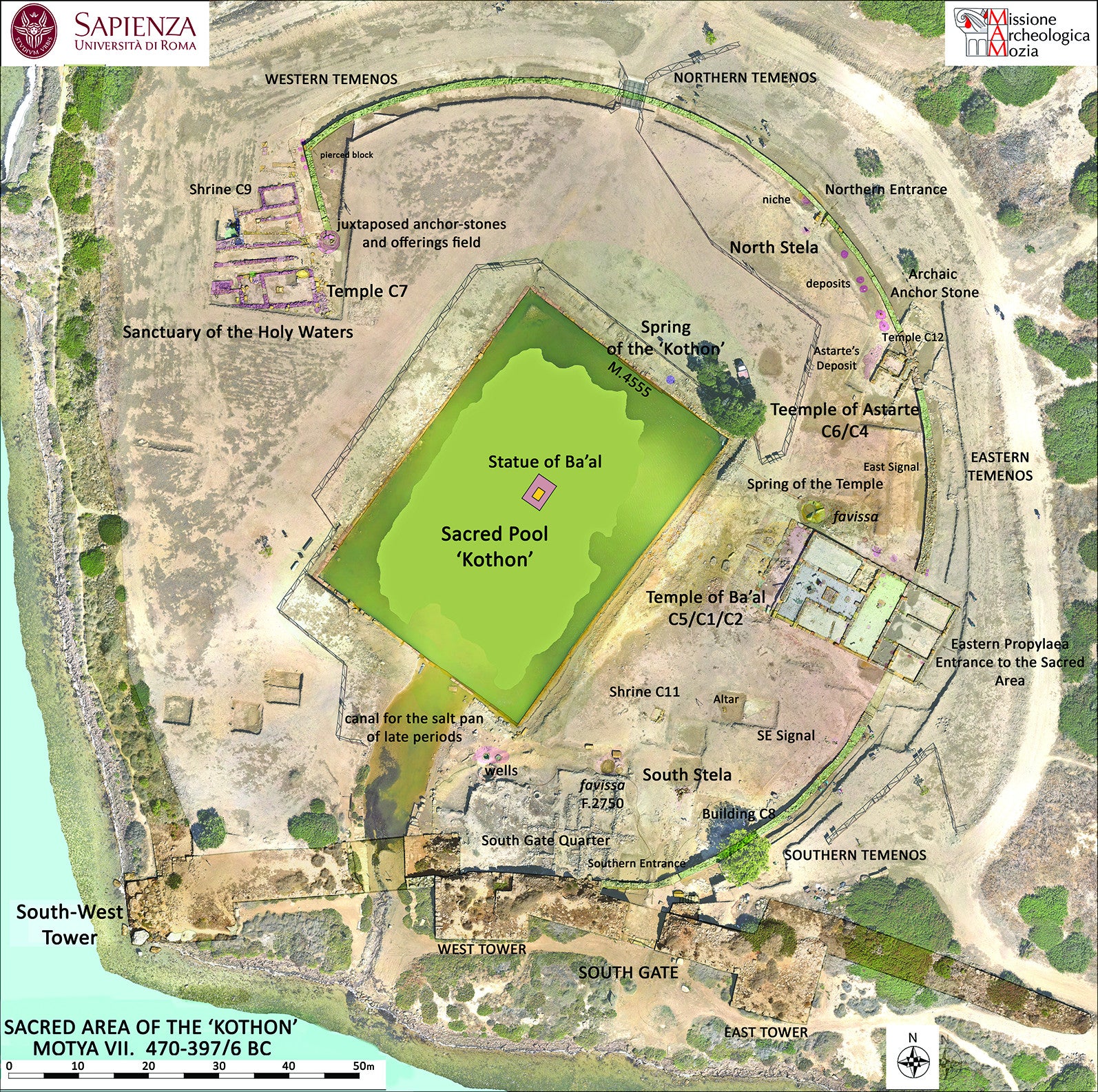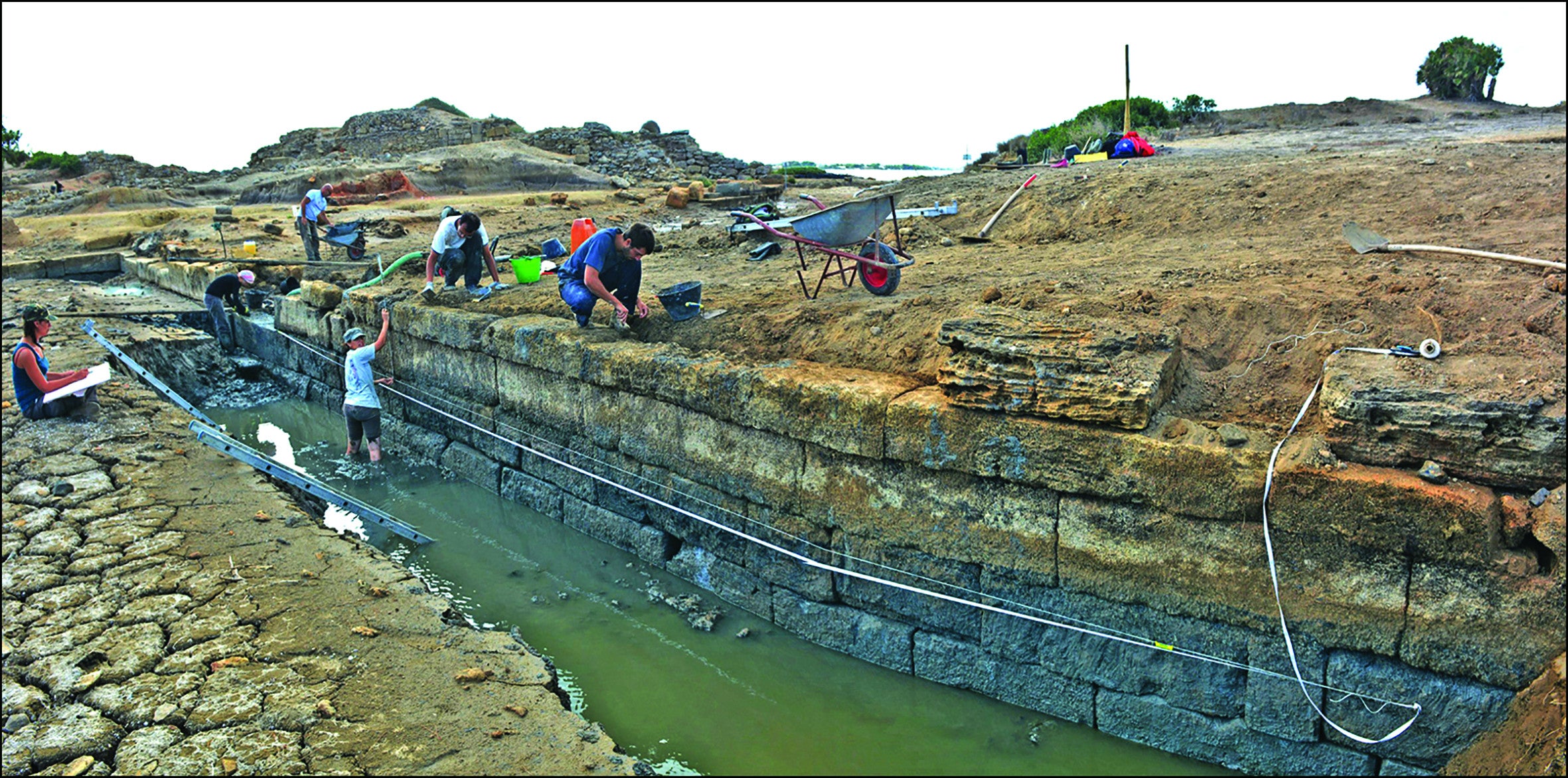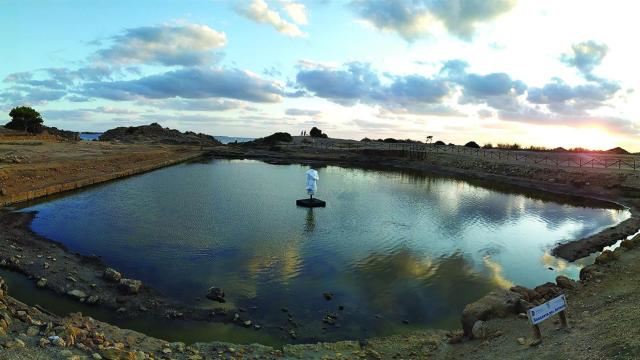Excavations at the former island-city of Motya have revealed a large sacred pool that the ancient Phoenicians used for religious purposes and to track the movements of stars, according to new research.
New research in the science journal Antiquity presents a novel interpretation of an artificial basin, known as a “kothon,” on the former island city of Motya in western Sicily. The authors of the new paper, led by archaeologist Lorenzo Nigro from Sapienza University of Rome, say the structure is not a military harbour as initially believed, but a “sacred pool at the centre of a monumental sanctuary with possible astronomical functions.” The discovery is shedding new light on ancient Phoenician culture and their connection to nature.

The kothon (a term used by Greek and Latin authors) was originally uncovered in the early 1920s, and it dates to between 550 and 397 BCE. Archaeologists figured it was an artificial harbour, and for good reason; a similar structure existed in Carthage, and it served the function of a military port. The new study challenges this longstanding interpretation, arguing that the 2,500-year-old structure is a sacred pool, making it among the largest to be found in the Mediterranean region.
Renewed excavations at the site between 2002 and 2010 resulted in the discovery of a large building, the Temple of Ba’al. The temple honouring the Phoenician deity was found along the edge of the presumed kothon. It was an odd discovery, as it’s not the kind of building that one might expect to find at a military harbour. This led to a decade-long effort to further investigate the structure, in which the team had to drain and excavate the basin, which measures 172 feet (52.5 meters) long and 119 feet (36.25 meters) wide. That’s bigger than an Olympic-size swimming pool.

The team “excavated stratigraphically, layer by layer, in order to reconstruct its complex history and as it is — unexpectedly — connected with the phreatic aquifer [the Greek term for a natural spring] we had to pump water outside continuously,” Nigro explained in an email. Indeed, as the excavations revealed, the supposed kothon was not connected to the sea and was instead fed by natural springs, so “it could not have served as an inlet to a hypothetical navigable basin,” according to the study.
Importantly, the archaeologists also discovered an additional temple around the perimeter of the pool, a structure dedicated to the Phoenician goddess Astarte, and a third building labelled “Sanctuary of the Holy Waters.” Burial stones, altars, religious offerings, and a pedestal at the centre of the pool were also uncovered. The pedestal still retained the feet of a tall statue that once stood up top — a statue the scientists believe represented Ba’al. Taken together, this evidence suggests the pool was a striking centrepiece to a substantial religious sanctuary.
But that’s not all. A map of the pool suggests it was aligned to the stars and used to track celestial movements. As the researchers write:
The reflecting surfaces of pools could be used for astronomical observations by using poles to mark the position of stars reflected in the water, allowing the observation and measurement of celestial bodies and their angles relative to the horizon. The constellations and their positions in the night sky on significant dates, such as solstices and equinoxes, are mirrored in the alignments of the main structures at the site, as well as through sacred features that include stelae carefully placed within the temenos to mark the rising, zenith, or setting of the stars over the horizon.
Nigro said this particular finding excited him the most — the “fact that ancient Phoenicians aimed to synchronise their life with that of the cosmos/nature,” he told me, and that “their gods were stars and nature was a constantly inspiring force in their lives.”
The redefining of the kothon and the characterization of the religious complex further refines our understanding of the ancient Phoenicians, a civilisation that lasted from around 2500 BCE to 64 BCE, when Pompey conquered Phoenicia. Nigro said the new findings show us that the Phoenicians “could gather different Mediterranean cultures in their city using this cult complex as a place to mix and exchange their traditions.” This openness, however, came at a cost, as it served to alienate Carthage, resulting in the siege of Motya in 398-397 BCE, according to the paper.
Upon completion of the excavation, Nigro’s team refilled the basin and mounted a replica statue of Ba’al to the pedestal. It actually looks very cool, providing a glimpse of what this sacred place looked like so many years ago.
